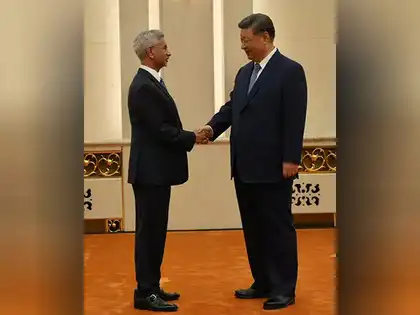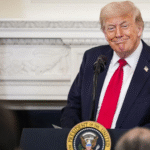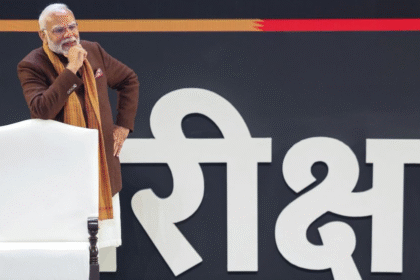Jaishankar Meets Xi Jinping: 5 Key Highlights from India-China Diplomatic Talks in Beijing
In a social media post, Mr. Jaishankar said he apprised President Xi about the recent development in India-China bilateral ties
In a significant diplomatic development that could shape the trajectory of India-China relations for years to come, External Affairs Minister (EAM) Dr. S. Jaishankar met with Chinese President Xi Jinping in Beijing on Monday. This high-level meeting marked the first formal bilateral engagement at such a senior level since the Galwan Valley clash in 2020, which severely strained relations between the two Asian giants.
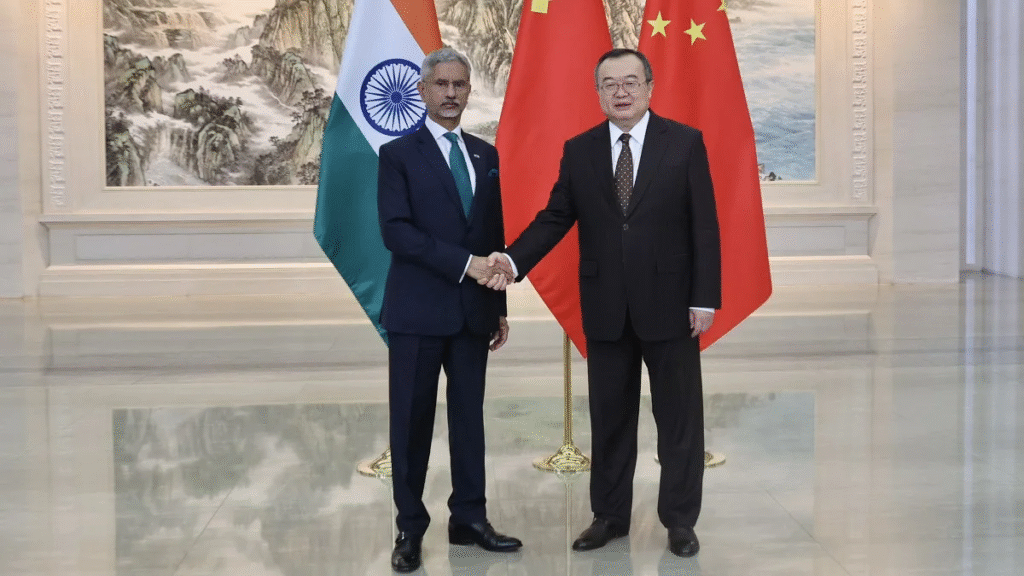
The meeting, which lasted for nearly an hour, focused on key issues ranging from border tensions, regional security, economic cooperation, and multilateral coordination. It comes amid renewed efforts by both sides to stabilize relations and resume full diplomatic dialogue following several rounds of military and working-level talks.
The diplomatic landscape between New Delhi and Beijing has remained complex and cautious since June 2020, when 20 Indian soldiers and an unspecified number of Chinese PLA troops were killed in a violent face-off in the Galwan Valley along the Line of Actual Control (LAC). While lower-level military and diplomatic talks have continued since then, this meeting represents a major shift.
Jaishankar’s visit to Beijing is part of a broader strategy initiated by both countries to re-engage through political channels, after over 20 rounds of military commander-level talks failed to fully resolve the LAC standoff.
The official press statements released by both countries outlined five key areas of discussion:
- Border Stability and LAC Disengagement
Jaishankar emphasized India’s consistent position that peace and tranquility in the border areas are essential for the development of bilateral relations. He urged China to expedite complete disengagement in the remaining friction points in eastern Ladakh and restore the status quo ante.
President Xi, while not addressing specifics, reportedly reiterated China’s intent to resolve disputes through dialogue, stating, “Differences must be managed peacefully, and both sides should avoid actions that complicate the situation.” - Trade and Economic Cooperation
Despite diplomatic friction, bilateral trade between India and China crossed $136 billion in 2024, with India importing over $100 billion worth of goods. Jaishankar raised concerns over India’s trade deficit and sought greater access for Indian pharmaceuticals, IT services, and agricultural products in the Chinese market.
Xi reportedly agreed that economic ties must be mutually beneficial and expressed interest in enhancing cooperation in green energy, digital infrastructure, and climate action. - Regional and Global Security Architecture
Both sides discussed their roles in regional groupings like BRICS, the Shanghai Cooperation Organisation (SCO), and the Global South forum. Jaishankar highlighted the need for multipolarity in Asia and cautioned against unilateral attempts to alter global norms.
Xi reaffirmed China’s commitment to a rules-based international order and suggested deeper coordination on anti-terrorism, Afghanistan, and Indo-Pacific maritime security. - People-to-People Contacts and Educational Ties
Post-pandemic, academic exchanges and travel between India and China have declined sharply. Jaishankar proposed revival of the India-China High-Level People-to-People Mechanism and faster processing of student visas and business travel. Xi welcomed the idea, noting that cultural and academic bridges are vital to long-term peace. - Restoring Bilateral Confidence
Perhaps the most important outcome of the meeting was a mutual understanding to reduce hostilities, rebuild strategic trust, and gradually normalize bilateral mechanisms. Jaishankar extended an invitation for a reciprocal visit by Chinese Foreign Minister Wang Yi to India, while Xi expressed hope that ties can be “stabilized and strengthened through sincere dialogue.”
“I conveyed to President Xi Jinping India’s view that the boundary issue must not be brushed aside. Normalcy in our relationship is only possible if peace prevails along the LAC. However, we are committed to rebuilding ties based on mutual respect, sensitivity, and shared interest.”
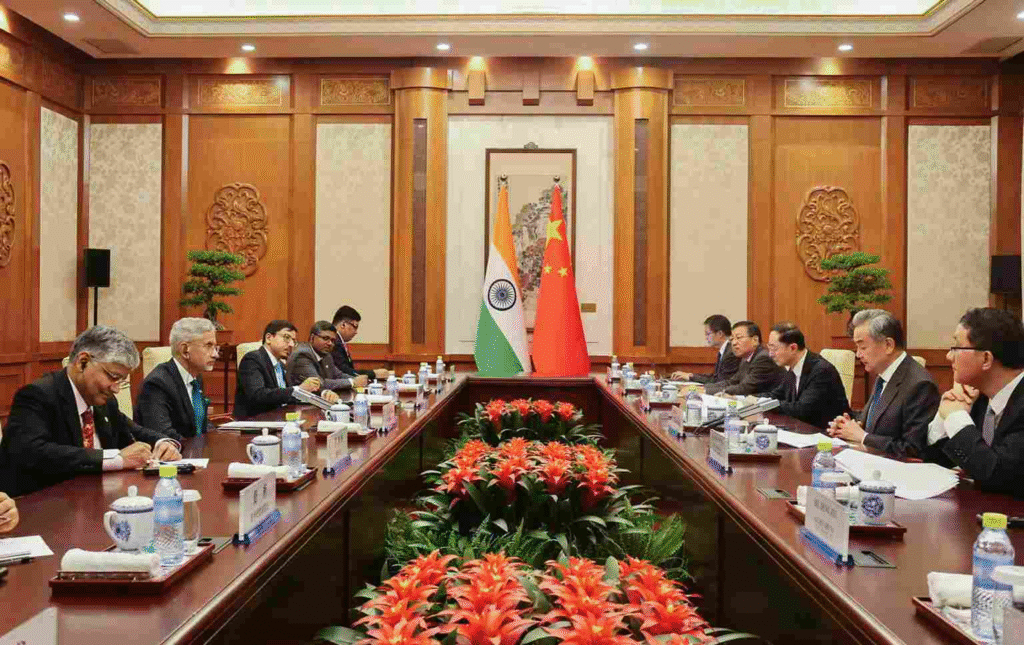
The language from both sides was measured but positive, reflecting a cautious optimism about the future of the relationship.
This meeting comes amid an evolving geopolitical environment. With the US-China rivalry intensifying, both India and China are looking to diversify their strategic options. India, seen as a key Indo-Pacific power aligned with Western democracies, has also maintained a nuanced position in global affairs, especially on issues like Russia-Ukraine and Iran.
Beijing’s outreach may also reflect a broader shift in Chinese diplomacy following internal economic pressures and global image challenges. For India, maintaining stability with China on its northern border is vital as it navigates partnerships with Quad allies, pursues regional leadership, and prepares for its G20 presidency in 2026.
Indian strategic experts have viewed the meeting as a tentative thaw, but warn that actual progress will depend on ground-level outcomes, especially regarding the LAC.
“Talks at the top level are always welcome, but unless we see meaningful disengagement in remaining hotspots like Depsang and Demchok, strategic mistrust will persist.”
Chinese analysts, too, described the meeting as a “signal of intent rather than settlement”, underlining the complex calculus behind China’s approach to India.
The success of this meeting will ultimately be judged by the actions that follow. Both sides have committed to resuming:
- The India-China Strategic Dialogue at the Foreign Secretary level.
- New rounds of military commander talks on border disengagement.
- The revival of bilateral working groups on trade, climate, and education.
If these mechanisms are revived and productive, they may pave the way for a potential Modi-Xi bilateral meeting on the sidelines of multilateral summits later in 2025 or early 2026.
Read Also : Shubman Gill’s Blunt Verdict After India’s Lord’s Test Loss: “We Needed More Discipline” – 4 Key Takeaways


